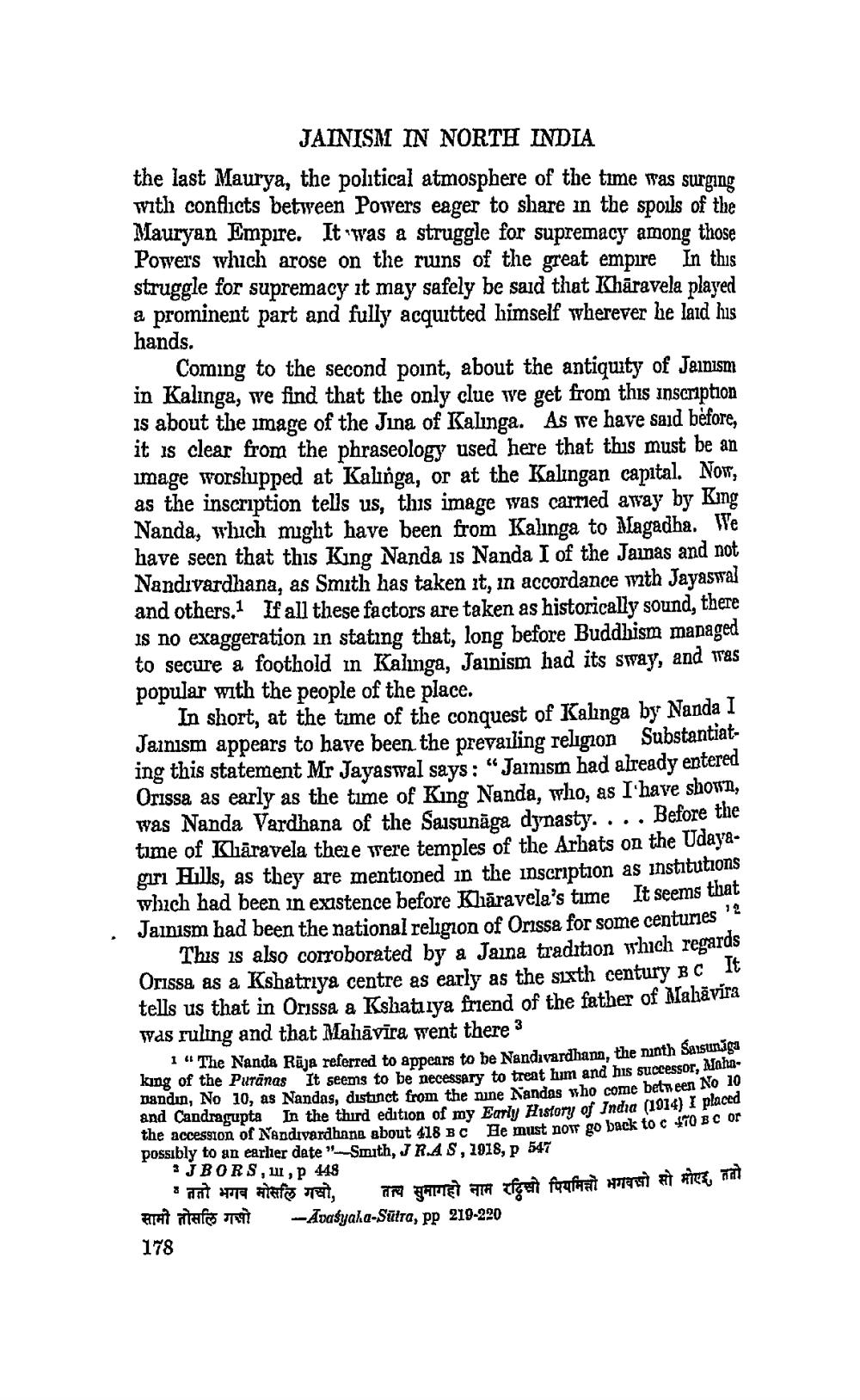________________ JAINISM IN NORTH INDIA the last Maurya, the political atmosphere of the time was surging with conflicts between Powers eager to share in the spoils of the Mauryan Empire. It was a struggle for supremacy among those Powers which arose on the runs of the great empire In this struggle for supremacy it may safely be said that Kharavela played a prominent part and fully acquitted himself wherever be laid his hands. Coming to the second point, about the antiquity of Jainism in Kalinga, we find that the only clue we get from this inscrption is about the image of the Jina of Kalinga. As we have said before, it is clear from the phraseology used here that this must be an image worsluppcd at Kalinga, or at the Kalingan capital. Now, as the inscription tells us, this image was carried away by King Nanda, which might have been from Kalinga to Magadha. We have seen that this King Nanda is Nanda I of the Jainas and not Nandivardhana, as Smith has taken it, in accordance with Jayaswal and others. If all these factors are taken as historically sound, there is no exaggeration in stating that, long before Buddhism managed to secure a foothold in Kaliga, Jainism had its sway, and was popular with the people of the place. In short, at the time of the conquest of Kalinga by Nanda I Jainism appears to have been the prevailing religion Substantiating this statement Mr Jayastal says: "Jamnism had already entered Orissa as early as the time of King Nanda, who, as I have shown, was Nanda Vardhana of the Sausunaga dynasty.... Before the time of Klaravela thene Tere temples of the Arbats on the Udayagiri Hills, as they are mentioned in the inscription as institutions which had been in existence before Kharavela's time It seems that Jainism had been the national religion of Orissa for some centuries This is also corroborated by a Jaina tradition which regards Orissa as a Kshatriya centre as early as the sixth century BC 1 tells us that in Orissa a Kshaturva friend of the father of Mahavira was ruling and that Malavira went there 3 1 "The Nanda Ruja reforred to appears to be Nandivardhana, the ninth Saisting king of the Puranas It seems to be necessary to treat him and his successor, nandin, No 10, as Nandas, distinct from the nine Nandas who come between and Candragupta In the third edition of my Early History of India (1914) I placu He must now go back to c * the accession of Nandivardhane about 418 BC possibly to an earlier date --South, JR.AS, 1918, p 547 I BORS, , P 418 ततो भगव मोसलि गयो त्यसमागहो नाम रटिसो रियमित्रो भगवसो सो माए, ता arrit mafes --Avasyaha-Sutra, pp 219-220 178




